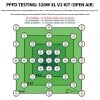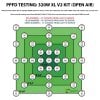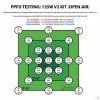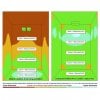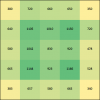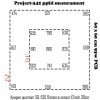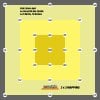ChiefRunningPhist
Well-Known Member
Hey guys, I'm looking for fixture PAR maps and the μmol/s output for the PAR measurements taken. Doesn't matter if it's lensed or not. If you've a saved PAR map on your phone or computer, post it up, thanks!
1. Total μmol/s:
2. PAR map(s)
Trying to asses real world correlation between PPFD, μmol/s, hang height, and fixture design.
UVB is EMR just like visible light, so if we can get an idea of how many visible photons are emitted (μmol/J) vs how many are hitting canopy (PPFD), we should be able calculate UV needs.
Inverse square law is great, but it's modeled after a point source emitting in all directions. An LED emits in one direction and is reflected in the fixture, as well as the chip housing. Lenses will throw the basic understanding of this principle off as well. I'm trying to determine what the real world correlation is between PPFD & μmol/s with respect to hang height and certain fixture designs.
EDIT:
If the light shines like a cone, I think you can use the ratio of the big circle vs the small circle and calculate theoretical ppfd for big circle (pretty accurately) if total μmol/s and beam angle are known for the little circle, or the chip?
1. Total μmol/s:
2. PAR map(s)
Trying to asses real world correlation between PPFD, μmol/s, hang height, and fixture design.
UVB is EMR just like visible light, so if we can get an idea of how many visible photons are emitted (μmol/J) vs how many are hitting canopy (PPFD), we should be able calculate UV needs.
Inverse square law is great, but it's modeled after a point source emitting in all directions. An LED emits in one direction and is reflected in the fixture, as well as the chip housing. Lenses will throw the basic understanding of this principle off as well. I'm trying to determine what the real world correlation is between PPFD & μmol/s with respect to hang height and certain fixture designs.
EDIT:
If the light shines like a cone, I think you can use the ratio of the big circle vs the small circle and calculate theoretical ppfd for big circle (pretty accurately) if total μmol/s and beam angle are known for the little circle, or the chip?
Last edited:




